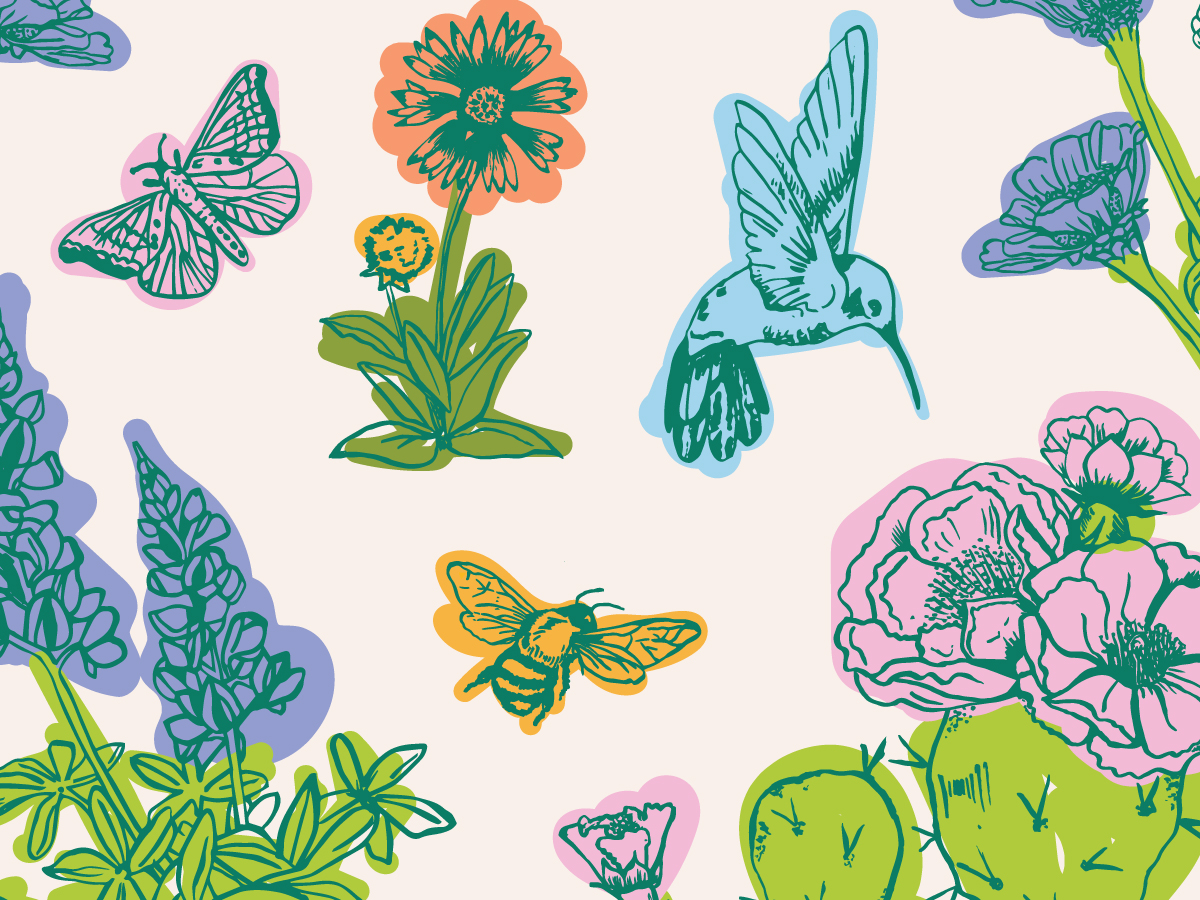Very Prairie
PRARIE ONCE COVERED OUR COUNTRY’S MID-SECTION, making way for mile after mile of lush grasses waving in the wind, carpets of wildflowers every spring and fall, and a vibrant habitat full of life under, on and above the ground.
In these places once defined by prairie, little of it actually remains today. Missouri contains barely one-half of 1 percent of its former prairie, according to the Missouri Prairie Foundation, and the National Park Service reports that only about 5 percent of the central and southern mixed-grass prairie remains. The Des Moines Urban Prairie Project laments the loss of 99.9 percent of tallgrass prairie that once covered 85 percent of Iowa.
But efforts are afoot in many prairie states to preserve, restore or reconstruct native grasslands, including sites in some of our busiest cities. These urban prairies provide vital habitat and ecological services and, perhaps just as importantly, a way to change public perception.
The Wildflower Center participated in a prairie restoration in the Mueller Austin development, on the site of the former municipal airport, including more than 30 acres of mixed-grass and tallgrass prairie and savannah.
“At first, we got a lot of calls querying why we had sown weeds,” says Center restoration ecologist Mark Simmons, Ph.D. “We actually had local residents mistakenly pulling up those so-called weeds. But when we explained that we were restoring a native prairie and all the benefits it provides, people started to get it and even take ownership of their new neighborhood native ecosystem.”
Other urban prairies include Shaw Nature Reserve and Forest Park Grasslands in St. Louis; Jerry Smith Park Prairie and Saeger Woods Conservation Area in Kansas City, Missouri; the City of Des Moines Urban Prairie Project; and 150 acres of prairie and prairie savannah in Chicago’s city parks.
When developers began tearing out Austin’s Mueller Airport, Simmons discovered a remnant colony of native little bluestem (Schizachyrium scoparium) in a remote corner of the airfield. Staff and volunteers from the neighborhood rescued the grass and potted it at the Wildflower Center before installing its progeny at Mueller in blackland prairie soil found beneath the old parking lot. Other native grasses and 14 species of wildflowers were seeded there as well.
“We weren’t preserving a piece of nature; we were making a piece of nature,” says Barbara Austin, principal with RVI Planning+Landscape Architects+Graphic Design, landscape architects for Mueller. “Taking something that was an airport and turning it into a natural area is different from enhancing a natural area. We went back and looked at what would have been there before people came.”
With the Center’s help, the firm created design guidelines for the rest of Mueller that encouraged using native plants. In the residential area, for example, 50 percent of landscaping plants must be native and the rest well-adapted to the site.
Simmons helped the property owners association, which employs the grounds maintenance crew, develop a detailed contract for maintenance, including when and how the prairie should be mowed. “The first couple of years, fast-growing grasses protect the soil from washing away and help keep out invasive plants while the slower growing grasses get established,” says resident Janelle Dozier. Mowing is scheduled around the grasses’ growth cycle.
The Chicago Parks District created the 1.5-acre Ashburn Prairie in Marquette Park by excavating and moving an existing prairie from land slated for development, according to natural areas manager Zhanna Yermakov. It has created prairies in under-utilized park areas by killing turf grass and seeding with native species. Seeded areas require intense maintenance the first three years, she says, primarily to fight weeds and invasives. “With time, the native community develops and more native seeds come up, but in urban areas, invasive species control is ongoing thanks to a constant supply from surrounding areas.”
A 10-acre tallgrass prairie at the Missouri Botanical Garden’s Shaw Nature Reserve in St. Louis represents reconstruction from pastures and crop fields left devoid of prairie plants, says curator Scott Woodbury. Grazing, row cropping and timber management destroyed plant diversity and suppressed the use of controlled burns, which led to tree growth. The Reserve uses mowing and controlled burns to manage trees.
The area was first seeded 30 years ago. More recent seedings covered five or 10 acres with 75 or 100 species. “The greater the diversity of plants,” Woodbury says, “the greater the diversity of other species, including insects, birds, mammals, fungi and bacteria.” If a planting fails, perhaps due to drought or invasives, seeding is repeated.
For Jerry Smith Park, the Missouri Department of Conservation and Kansas City Parks removed woody vegetation using “tree eating” equipment that did not disturb the soil, which might have destroyed dormant plants and seeds. “We allowed time for what was there to establish,” says Larry Rizzo, natural history biologist with the state conservation department. “Then we added a few species that records showed had been present in the area.” Annual controlled burns and hand-sown seeds collected from nearby prairie have enhanced and helped distribute the native populations. The effort includes eradication of an aggressive invasive species, Sericea lespedeza (Lespedeza cuneata). Invasive plant removal and prescribed burns will be ongoing.
According to Simmons, prairies provide many valuable ecosystem services, including carbon sequestration, stormwater control, water filtration, absorption of air pollutants, oxygen production and habitat.
Next to wetlands, prairies are the best way to sequester carbon dioxide below ground, even better than tropical forests, he adds. “Grasses invest their resources more below ground than above and so put the carbon into the ground.” Prairies also can be harvested to produce ethanol, a renewable resource.
Once established, native prairie landscapes cost less to maintain. A St. Louis corporation cut landscape maintenance costs by $40,000, to less than $10,000 a year, by planting prairie on 85 percent of its headquarters’ property, Woodbury says. Municipalities can save money by converting frequently mown areas to prairie or savannah. The Missouri Department of Transportation hopes to reduce highway maintenance costs by focusing on native plants on all new construction projects, he adds, with trained roadside managers in every district in the state to implement the plan.
Yermakov doesn’t have hard numbers on what its prairies have saved Chicago in terms of water and mowing. But the District currently collects some data on accumulation of soil carbon in prairie versus turf grass. “Maintenance produces carbon outputs such as mowing, with turf, and burning, with prairies,” she says. “We’re trying to see how much net carbon we are accumulating, to demonstrate with hard numbers how mowing less or changing management practices and converting this many acres of turf to native may change our carbon footprint.”
Native landscaping on parkland improves habitat and provides opportunities for wildlife, Yermakov says, especially migratory land birds. With it also come social benefits like enhanced recreational opportunities and education. At its 132-acre Burnham Centennial Prairie on Lake Michigan, Chicago has partnered with The Audubon Society to track use of native landscapes versus turf land by migratory birds. “We’ll be monitoring that as we convert turf to natives and expect to see more birds and more species,” Yermakov says.
The Mueller prairie is already a stopover for migrating birds, Simmons says, especially in fall when the plants go to seed.
Prairies in urban areas provide unique opportunities to educate the public. “When we restore a ranch in the Hill Country, the owner’s friends see it. But when we do it in the city, hundreds of thousands of people see it,” Simmons says. “This prairie is just a few miles from downtown.
When I say there is 0.1 percent of the prairie left, who cares? But when people see how beautiful and productive it is, then they care. If you say Austin used to be tall-grass prairie and a child asks what it looked like, well, who knows? Now we have an accessible native prairie right in the heart of Texas and open to everyone. At the end of the day, it’s not that this is a restoration but education. Education is what is going to save us.”
Part of the goal at Mueller is to show people how natives can be used in a garden. “If we get these same prairie plants into yards, you’ve effectively extended the prairie and all its function across the urban landscape. It will no longer be like, ‘Here is nature, and here is something else: your yard.’” Simmons notes that unfortunately only about 50 of roughly 5,000 native vascular species in Texas can be purchased at commercial nurseries. This number, however, is increasing every year as interest grows.
Restoring long-suffering prairie remnants and creating them from nothing are equally challenging. One of the biggest obstacles is keeping out invasive species like the Johnson grass and King Ranch bluestem that trouble Mueller. More than that, conventional landscape maintenance staff often lack proper training. Simmons says, “It’s a learning process. You can’t walk away from restoration. When local communities tend restored landscapes like this it not only benefits the land but also becomes an enriching experience for the people. ”
Appearance can be another obstacle. To the uneducated eye, a prairie may look neglected and unkempt. Chicago uses signage and fencing to deal with this issue. “We put them up throughout the process,” Yermakov says. “When we’re killing the turf grass, we’ll put up a sign that tells people why this grass is brown. If we put in a cover crop and mow it to bring more sunlight to native seed, we put up a sign explaining why we’re mowing. Any major action we take, we put up explanatory signs.” Signs are used to identify the habitat, what it is used for and its history. They also take into consideration planting methods as well as attributes of plants that have traditional aesthetic appeal. The district takes projects to local advisory councils as well, to communicate with the community and allow residents to comment. An active volunteer stewardship program recruits people from the community to be involved in restoration projects, creating a constituency.
Outlining prairie areas with fences makes them look intentional and helps counter the perception that someone just forgot to mow, Yermakov says. Shorter species may be used in certain areas, or a suite of species that provide color through the season to enhance aesthetics. Prescribed burns in urban areas can be tricky. Burns at Jerry Smith Park, for example, have grown about as big as they can safely get, says Rizzo. Limits on burns effectively limit the size of urban prairies.
Another issue is public perception of desirable versus undesirable wildlife. At Mueller, people worry about rats, Simmons says. “But, while trash attracts nasty invasive rats, those in the prairie are harmless cotton rats.” People worry about snakes as well, but Woodbury argues that snakes increase wildlife diversity in a prairie. Some years ago in Illinois, one landowner sued another over a native landscape, in part over fear of snakes coming into his yard from the native landscape.
“That wouldn’t really happen,” Woodbury says. “Snakes don’t want to go into a mowed grass yard. In the end, though, the judge said that this state once was tallgrass prairie, and that is an appropriate landscape even in a residential neighborhood, if done correctly.”
Urban sites such as Mueller are opportunities to show prairie done correctly. “We’re not just restoring prairie but showing its value,” says Simmons. “It’s a good field to be in.” No pun intended.
More information about urban prairie restoration can be found here:
Mueller Prairie, muelleraustin.com
Missouri Botanical Garden Shaw Nature Reserve, shawnature.org
Missouri Prairie Foundation, moprairie.org
Jerry Smith Park Prairie mdc.mo.gov or kcwildlands.org

